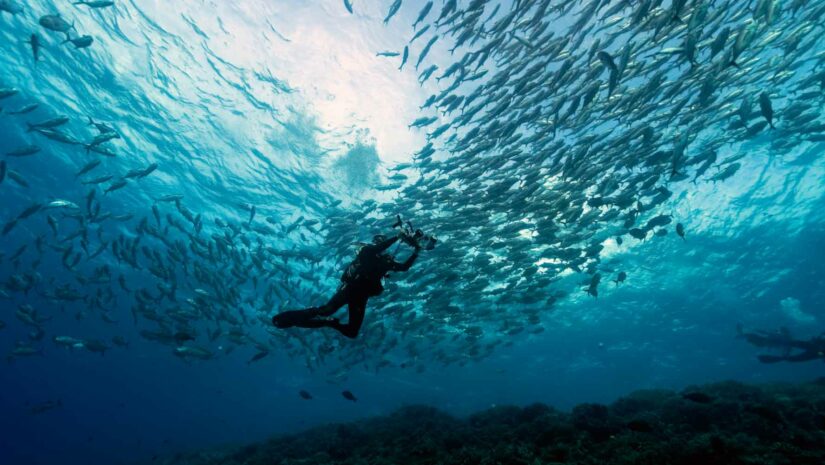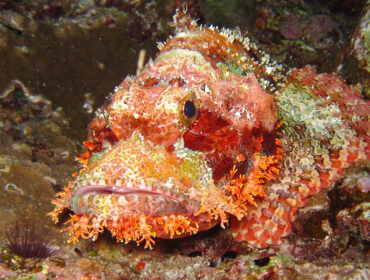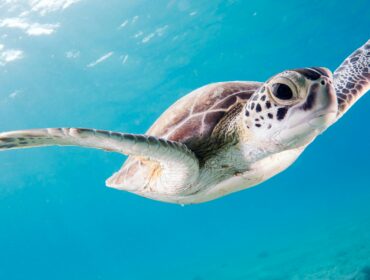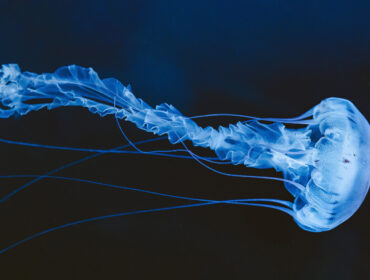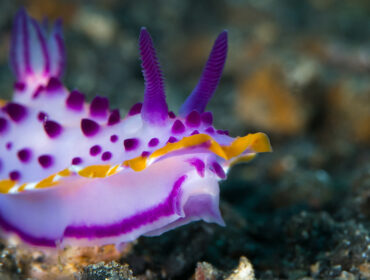The islands of the Philippines have an impressive range of marine life, deeming them popular among divers worldwide. Almost a million square miles of sea make up the country’s surrounding waters, with a major part lying in the Coral Triangle, an area that contains the world’s highest coral diversity. These waters contain more than 2,500 species of fish and over 500 species of coral, making the Philippines a marine biodiversity hotspot.
Philippine sea life gives divers great opportunities to spot many amazing sea creatures. They can spot thousands of colorful reef fish, and depending on the season, rarely seen pelagic fish, such as whale sharks and hammerhead sharks. Six out of seven endangered sea turtle species call the Philippines home, and there is an abundance of invertebrate and macro life, making this a premiere destination for underwater photographers.
With so much to see beneath Philippine waters, you’re probably eager to learn more about specific marine life. Here are 15 species that are commonly sighted in Philippine waters.
15 Endemic Marine Species in the Philippines
Bamboo Shark

The tropical waters of the Philippines host over 150 species of sharks—and the bamboo shark is one of them. Brownbanded ones are among the most common shark species in the country’s seas.
The long and slender body of this species features lobed fins and an asymmetrical caudal fin. Young brown-banded bamboo sharks have medium brown bodies covered by dark brown bands, which eventually turn into a solid brown upon maturing.
Brownbanded bamboo sharks swim around muddy seafloors that lie between the shore and the reef. These areas serve as their hunting grounds at night, where they find small prey, such as crabs and worms, with barbels on their snouts.
Pygmy Seahorse

Also known as Bargibant’s seahorse (hippocampus bargibanti), the second sea creature on this list is one of the world’s smallest vertebrates (usually less than 2 centimeters in size). Its physical features include a short snout and a fleshy body that features plenty of tubercles. Thanks to these tubercles, the pygmy seahorse can be one with knobby corals underwater.
This species generally consumes small crustaceans, zooplankton, and coral tissue. You can find them on gorgonian sea fans that are 52 to 131 feet deep.
Blue-Ringed Octopus

The blue-ringed octopus might seem harmless to you when you first look at it, but it can kill you in an instant. It spits out venom that’s a thousand times more powerful than cyanide, which is enough to kill 26 humans in minutes. This makes the blue-ringed octopus one of the ocean’s most dangerous animals.
This species is a common resident in the Pacific Ocean and is another endemic marine species of the Philippines. It lives in shallow tide pools and coral reefs with soft and sandy surfaces.
Snowflake Moray Eel

Next up on our list of common sea creatures in Philippine waters is the snowflake moray eel (echidna nebulosa). It’s an enormous species, with lengths reaching up to 75 centimeters. The snowflake eel’s body looks like a snake with a light white-yellow color. Black and yellow mottled markings cover its body, both of which come in shapes similar to snowflakes, stars, or flowers.
Snowflake eels frequent rocky and coral reefs, as well as lagoons. Also, they often eat their prey (which consists of tiny fish and crustaceans) at night.
Frogfish

Frogfish is another interesting species of Philippine reef fish: These strange creatures have leg-like fins, camouflaged skin, and perpetual “oh no!” expressions. Frogfish look quite small, with its biggest species coming in at 12 inches.
But don’t let its tiny form fool you: the species hides from predators and gets sneaky on food through different disguises. Frogfish also lure prey using the illicium on its body, which works as a fishing rod. Awesome, right?
Decorator Crab

Decorator crabs always adorn themselves with a variety of plants and animals, hence their name. But there are two reasons why they do this: it serves as an excellent camouflage and as a strong defense against poison. The decorator crab attaches organisms to its shell using satae, which are hard hooks that resemble hair. And it’s very effective: divers will find it hard to spot the species during daytime.
Harlequin Shrimp

The harlequin shrimp is relatively popular among divers due to the vibrant pattern on its body. Unique red and purple spots cover the body of this species, which can come in a white or cream hue. It’s also small in size, with lengths between one to two inches.
Harlequin shrimps are nocturnal, meaning they only come out at night to consume prey. And when it’s daytime, they go into hiding. The species often feeds on starfish, among other echinoderms.
Eagle Ray

A part of the stingray family, eagle rays are named after the unique spots, wing-like fins, and eagle-like snouts on their bodies. They’re carnivores with mollusks, crustaceans, octopuses, and small fish as their prey. Eagle rays are mostly harmless since they’re both shy and gentle. They’re one of the most well-known sea creatures among snorkeling enthusiasts, too.
Nudibranchs

Nudibranchs or sea slugs vary in both color and shape: Their heads and backs feature vibrant stripes or spots and ornate appendages. Bright colors also distinguish these species from each other, with several types being considered poisonous.
Divers can spot over 500 nudibranch species in Philippine waters, making them one of the most common sea creatures in the country.
Mandarin Fish

Mandarin fish typically have blue-colored bodies with wavy orange lines and other colors such as yellow, orange, purple, and green. And since they have quite peculiar colors, people occasionally label these species as “psychedelic fish.” You can find Mandarin fish in Malapascua Island, serving as one of the main attractions for divers who want to explore it.
Banded Pipefish

The banded pipefish is a member of the syngnathidae family, which includes pipefish and seahorses. Its body is really long with a shape that fairly resembles a small eel. The body comes in a yellow-greenish color and features evenly spaced black rings all over it. It also has a vibrant red tail that boasts white fringes and a white spot.
Banded pipefish love staying near reefs, as well as tide pools, lagoons, and outer reef slopes. They also like places with caves and crevices that they can live in.
Flying Gurnard

The flying gurnard, or sea robin, has a nearly rounded, elongated body narrowing towards its tail. It may have a light green or dark and light tan color. This species also features dark-spotted pectoral fins which help it move forward in short distances. Flying gurnards call shallow waters their home, where there are sandy floors.
Moorish Idol

Known for its appearance in the animated movie Finding Nemo, the Moorish idol is another common sea creature you’d run into in the Philippines. It has black and white stripes, as well as several yellow stains on its body and face. The species resembles a disk which adds to their attractiveness.
Moorish idols are extremely social: They’re excellent partners for chromis, dottybacks, and other species that are just as friendly as them. You can spot these fishes swimming in small groups with two to three specimens or in larger groups that can include up to a hundred Moorish idols.
Flamboyant Cuttlefish

The flamboyant cuttlefish is part of the sapiidae family with squid, octopus, and chambered nautilus as its relatives. It’s roughly eight centimeters long, making the species one of the smallest of its kind.
However, what sets flamboyant cuttlefish apart from other marine animals in the Philippines is its ability to flash yellow, maroon, brown, white, and red hues across its body. Experts have assumed that this is how the species show its toxicity. The flamboyant cuttlefish looks for its favorite food on ocean bottoms. It also occupies this particular location, thanks to its flat body.
Titan Triggerfish

Lastly, we have the titan triggerfish. At 75 cm, it’s the biggest among its kind. But aside from its massive body, it’s also the most aggressive of all triggerfishes and fish species in general. Titan triggerfishes have an extremely protective personality that’s most evident during reproduction. They’ll actively keep an eye on their nest and protect it from intruders, which explains their territorial nature.

